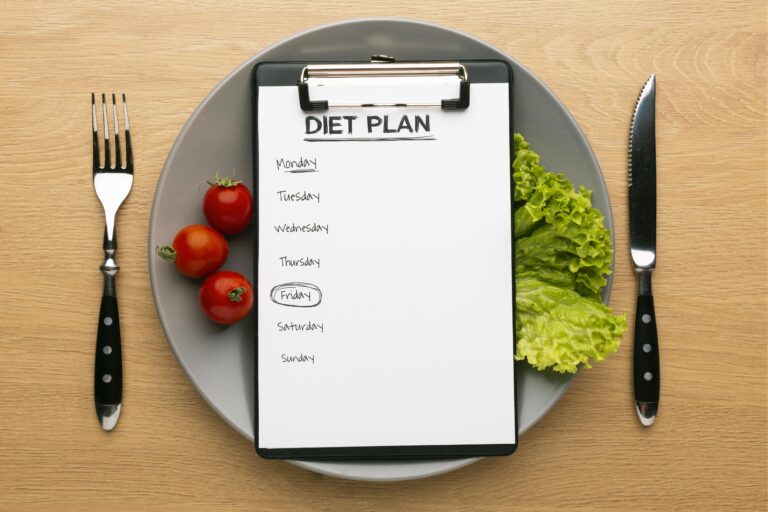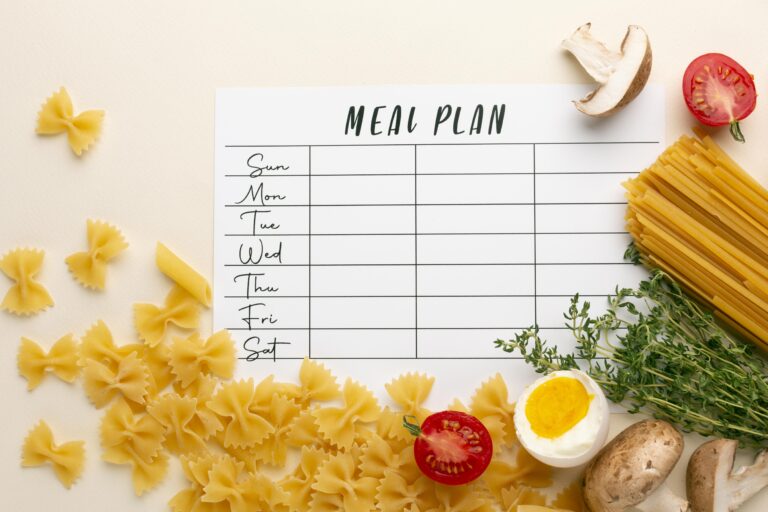How to Gain Weight with a Fast Metabolism
Are you one of those individuals who struggle to gain weight despite having a lightning-fast metabolism? While others envy your ability to eat without putting on extra pounds, you find it challenging to achieve the body shape you desire.
In this post, we will delve into how to gain weight with a fast metabolism using simple, actionable steps that anyone can follow. Let’s unlock the secret to attaining your weight gain goals effectively!
1. Understanding Metabolism and Weight Gain
Your metabolism is like an engine that drives your body’s energy expenditure.
A fast metabolism means your body burns calories more rapidly, making it challenging to retain extra weight.
To gain weight, you need to understand how to overcome this natural tendency.
2. Creating a Caloric Surplus
A caloric Surplus is the key, when it comes to gaining weight with a fast metabolism, creating a caloric surplus is the foundation of success.
A caloric surplus means consuming more calories than your body burns daily.
This excess energy provides the building blocks your body needs to put on weight, especially in the form of muscle mass.
To calculate your daily caloric needs, you can use online calculators that take into account factors like your age, gender, weight, activity level, and goals.
Once you have an estimate of your maintenance calories (the number of calories you need to maintain your current weight), you’ll want to add a surplus to that number.
The surplus you choose depends on your goals. Adding 200-300 calories per day above your maintenance level may be sufficient if you aim for a slow and steady weight gain.
For a more rapid weight gain, you can increase the surplus to 500-700 calories daily.

3. The Role of Protein
When it comes to putting on weight with a quick metabolism, protein is a nutritional powerhouse.
Not only is it essential for building and repairing tissues, but it also plays a crucial role in supporting muscle growth.
To effectively utilize protein for weight gain, it’s essential to ensure you’re getting enough of it in your daily diet.
The recommended daily intake of protein varies depending on factors like age, gender, activity level, and weight goals. However, a general guideline is to aim for about 0.8 to 1 gram of protein per pound of body weight.
Including a variety of protein sources in your diet is beneficial for achieving your weight gain goals.
Some excellent sources of protein include:
Lean Meats: Chicken, turkey, lean beef, and pork are all rich sources of protein.
Fish: Salmon, tuna, and other types of fish provide not only protein but also healthy omega-3 fatty acids.
Eggs: Eggs are a complete protein source and are versatile in cooking.
Dairy Products: Milk, yogurt, cottage cheese, and Greek yogurt are rich in protein and calcium.

Legumes: Plant-based sources of protein include beans, lentils, and chickpeas.
Nuts and Seeds: Almonds, walnuts, chia seeds, and hemp seeds offer protein along with healthy fats.
Tofu and Tempeh: For vegetarians and vegans, soy-based products like tofu and tempeh are valuable sources of protein.
4. Limit Cardiovascular Activities
Cardio exercises, such as running, cycling, or swimming, are excellent for improving cardiovascular health, increasing stamina, and burning calories.
They are beneficial for those looking to lose weight or maintain a healthy weight. However, for individuals trying to gain weight, it’s essential to strike a balance between cardiovascular activities and strength training.
Strength training is crucial for building muscle mass, and muscle weighs more than fat.
When you engage in strength exercises, you stimulate muscle growth, which contributes to weight gain.
Cardio, on the other hand, focuses more on burning calories, which could offset the caloric surplus needed for weight gain.
5. Frequency and Timing of Meal
While the frequency of meals is essential, the timing of meals also matters. Aim to eat within an hour or two of waking up to kickstart your metabolism.
Throughout the day, space out your meals and snacks evenly to maintain a constant flow of nutrients.
It’s also essential to have a post-workout meal or snack. After a strenuous workout, your muscles are primed to absorb nutrients for recovery and growth.
Include protein and carbohydrates in your post-workout meal to optimize muscle repair and replenish glycogen stores.

Avoid large meals right before bedtime, as this can lead to discomfort and disrupt your sleep. Instead, opt for a balanced and moderate-sized dinner a few hours before bedtime.
6. Managing Stress and Sleep
Managing stress and getting enough sleep are essential components of a successful weight gain journey with a fast metabolism.
While nutrition and exercise play vital roles, neglecting stress management and sleep can hinder your progress and overall well-being.
For muscular growth and recuperation, quality sleep is essential. During deep sleep stages, your body releases growth hormones that aid in tissue repair and muscle building.
Getting enough sleep ensures your body has adequate time to recover from the physical demands of weight gain workouts.
Gaining weight with a fast metabolism is challenging, but it’s possible with the right approach. Focus on a caloric surplus, regular strength training, and a balanced diet.
Remember, be patient with your progress and stay committed to your goal. Always consult a healthcare provider or nutritionist before making significant changes to your diet or exercise routine.
Hope you got the answer to your query. Check out our more blog posts and articles by clicking here.














